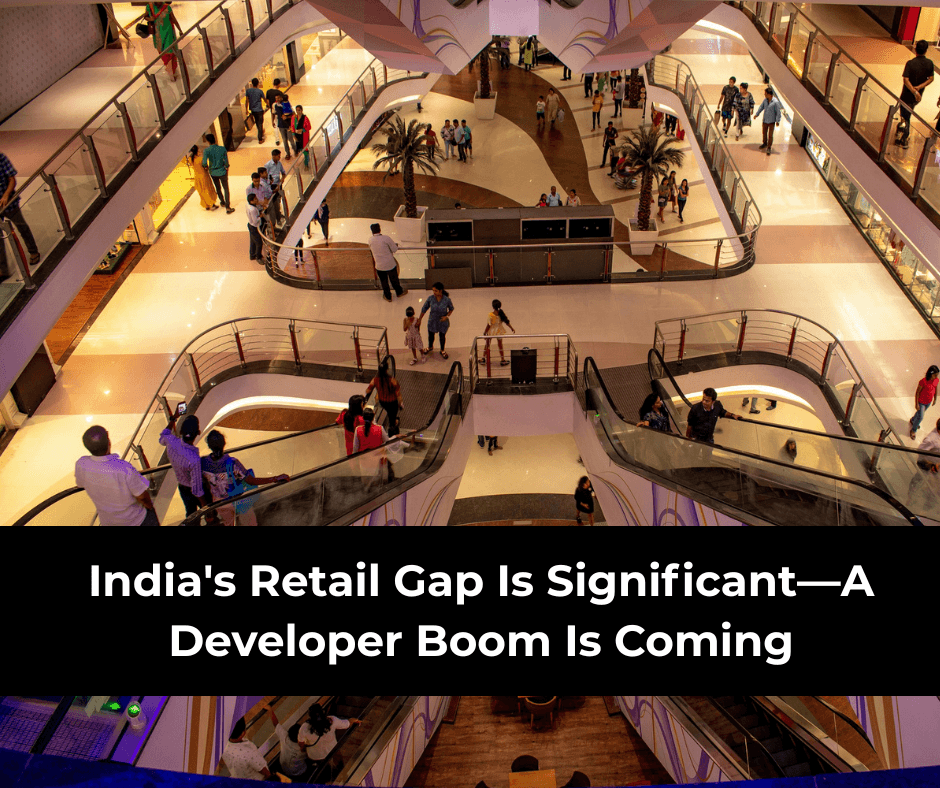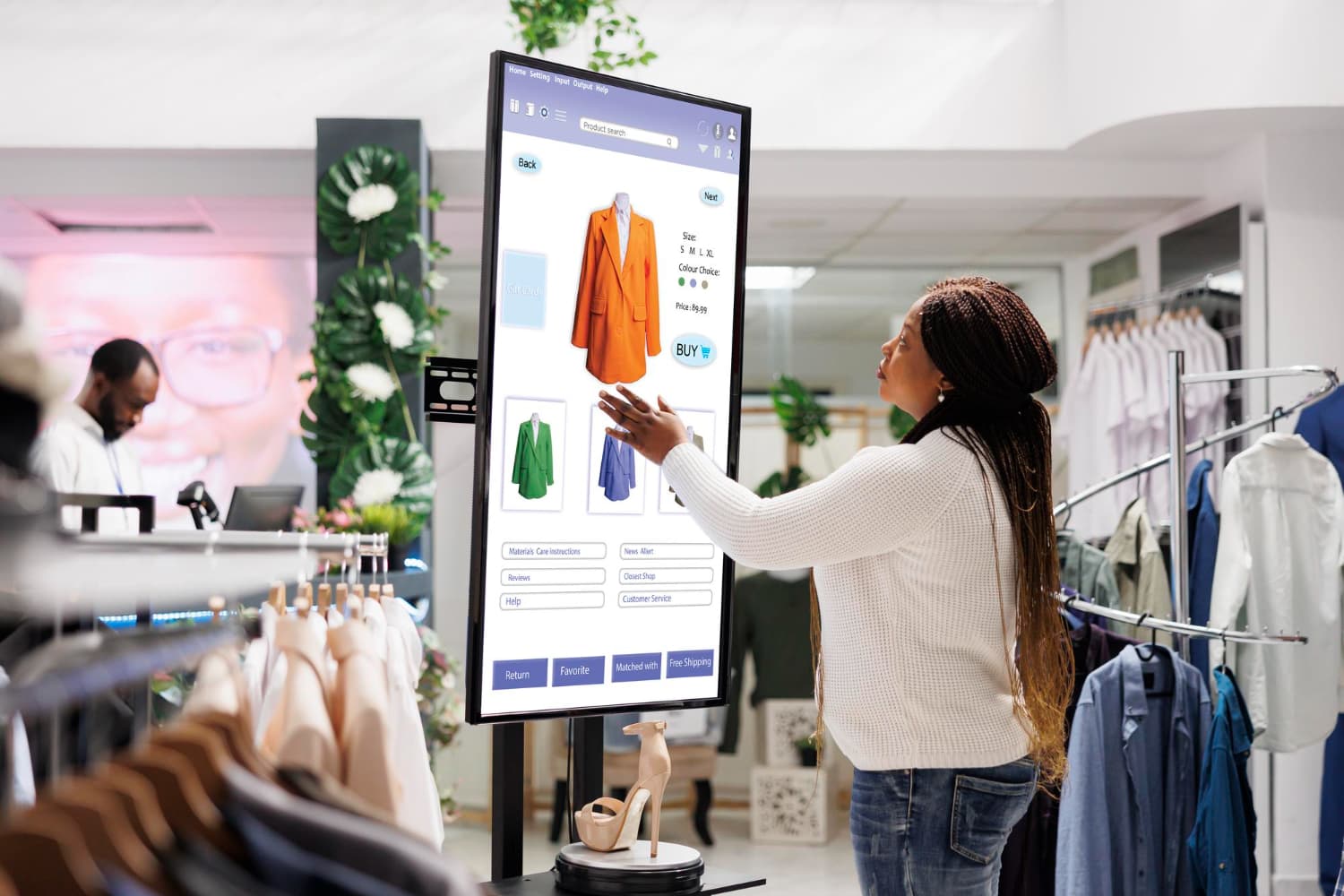Founder Blogs
Why We're Bullish About India's Retail Infrastructure

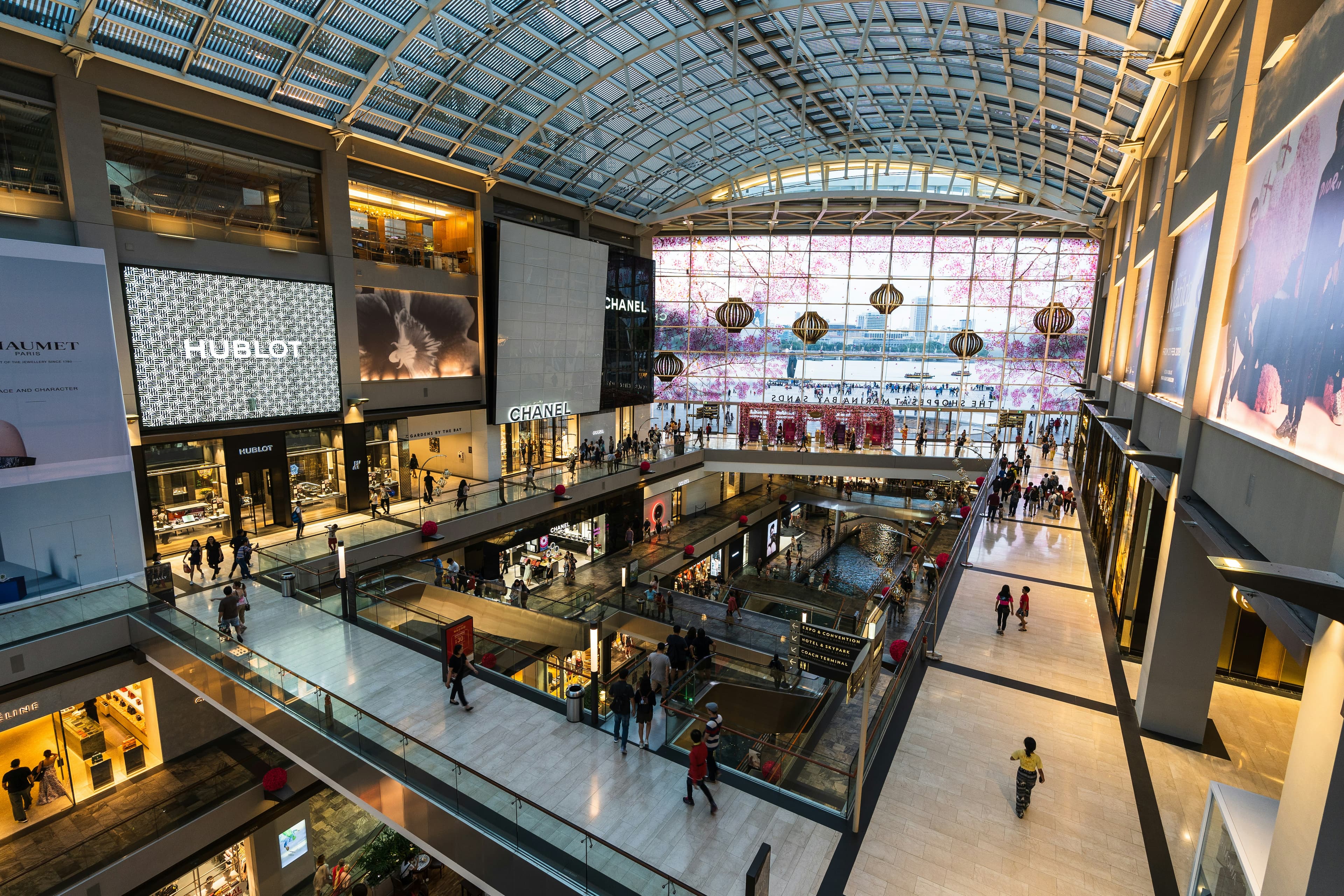
Last month, I wrote about how India’s retail infrastructure is still playing catch-up.
We have just 0.5 square feet of mall space per person.
That’s well below other developing and developed countries. But just these numbers don’t give us the complete picture.
While the gap is real, momentum is quietly building on the ground.
In this post, I want to unpack what’s changing and why I’m bullish about the future of malls in India.
Demand Is Outpacing Supply
For the third year in a row, retailers in India are leasing more mall space than what’s available.
- In 2024 alone, over 6.5 million square feet was leased—an all-time high post COVID.
- Vacancy rates in malls have dropped sharply, from 15.5% in 2021 to just 9% in 2024.
This tells a clear story: demand is running ahead of supply.
Retailers want space, but there just isn’t enough of it, especially in well-located or high-footfall areas. When this kind of mismatch continues for several years, it usually leads to a building boom.
Developers Are Catching Up
Sensing the opportunity, developers are ramping up construction.
Between 2023 and 2028, over 38 million square feet of new mall space is expected to come among just seven cities.
Delhi-NCR will account for the majority of these new developments, but Chennai, Bengaluru, and Hyderabad aren’t far behind.
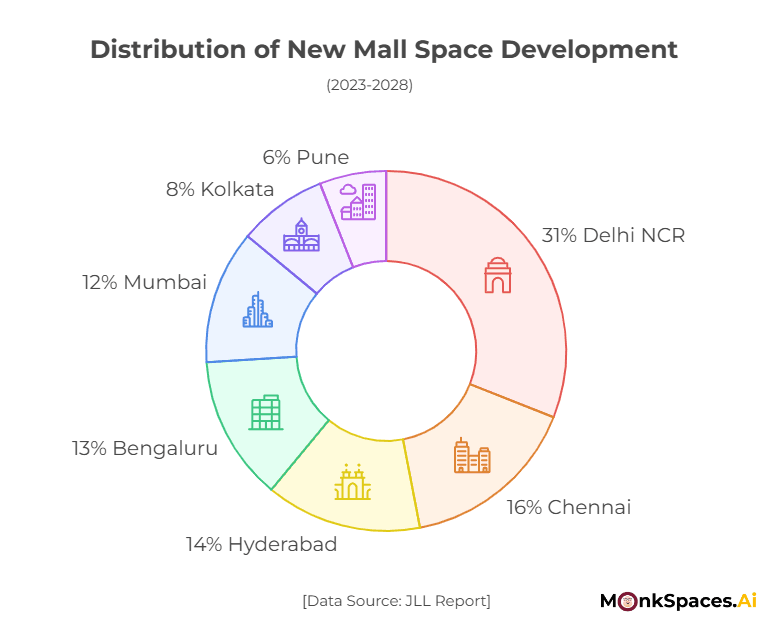
While this new supply is promising, it will take time to meet current demand. In the short term, retailers will continue competing for limited space.
Disposable Income Is Projected to Grow
India’s middle class is growing fast.
Right now, 31% of people belong to the middle class group, but by 2031, that number is expected to hit 38%.
As the middle class grows, so does disposable income. BMI projects that disposable income in India will grow at a compounded rate of 14.6% each year until 2027. By then, about 25.8% of households are expected to earn over $10,000 in disposable income annually.
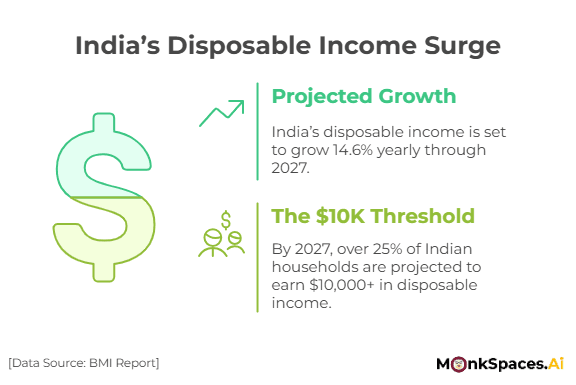
Young India Is Reshaping Malls
India has one of the youngest populations, with over 40% under 25 and a median age of just 28. This shift is changing how malls are used.
For many young Indians, malls have become lifestyle hubs for eating, socializing, and exploring new experiences, not just shopping.
Food and drink now take up 25-30% of mall space, almost double what it was before COVID, with more room dedicated to entertainment and wellness.
This shift makes malls more resilient and adaptable to changing consumer behavior.
Big Money Is Betting on Indian Retail
And then there’s the money.
India was the fifth-largest destination for foreign retail investment in FY 2023–24. Over $70 billion in FDI flowed into the retail and consumer sector that year.
This kind of capital helps in two major ways: it brings in international brands that attract footfall, and it funds the development of new retail infrastructure.
In other words, global investors are seeing what local developers and retailers already know—India’s organized retail market is just getting started.
Retail Chains Can Now List on Public Markets
A key sign that India’s retail market is gearing up for major growth is that retail chains can now list on public markets.
This is a big milestone that signals the market is maturing, and it’s a clear shift toward more developed market behaviors.
Nexus Select Trust, India’s first publicly traded mall REIT, is a major part of this change.
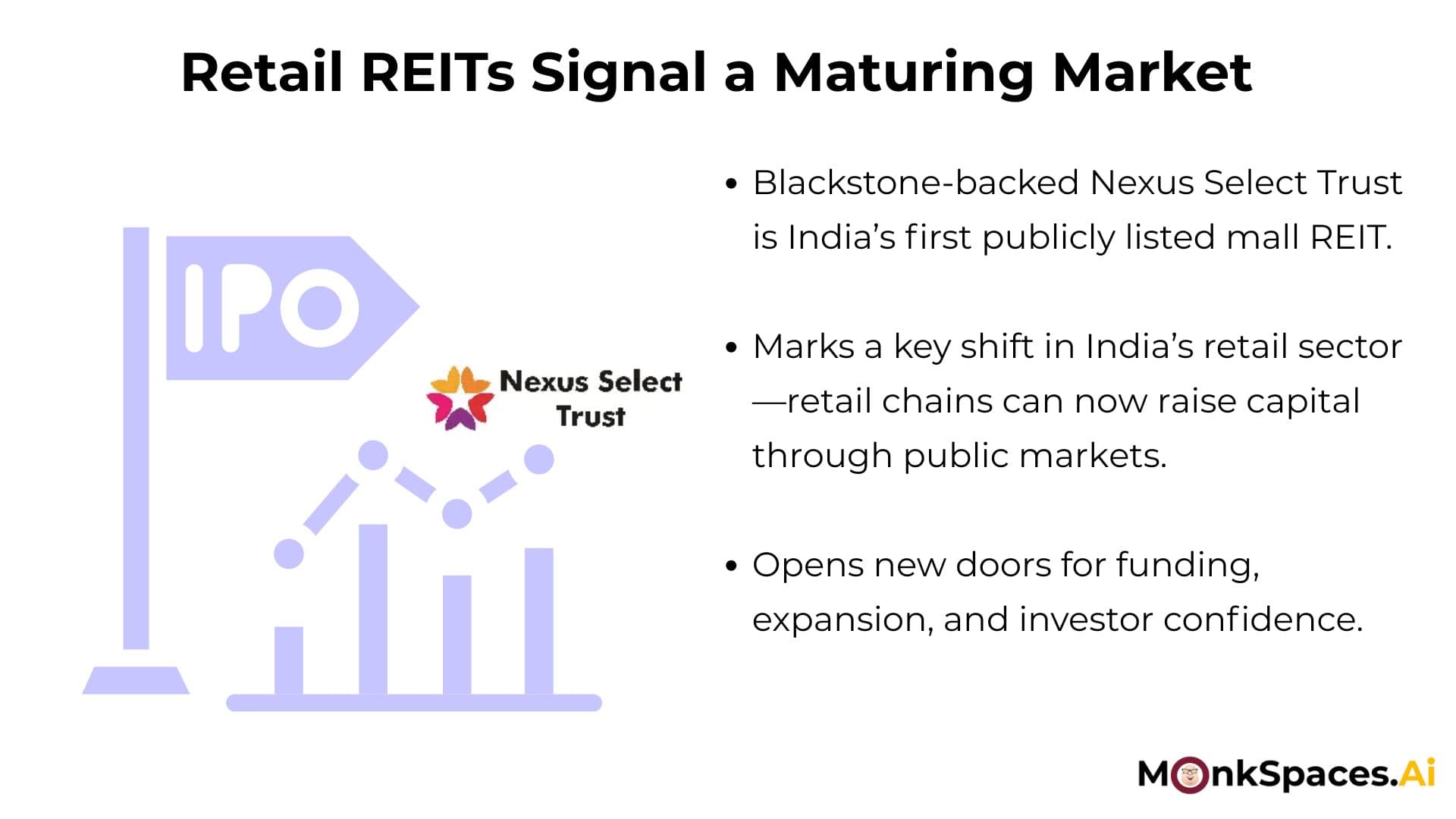
It’s important because it shows that retail chains now have access to new ways of raising capital, allowing them to expand more quickly.
With backing from Blackstone, Nexus plans to double its mall operations over the next few years, which will give the entire sector a substantial boost.
This move is a strong indicator that India’s retail market is ready for a major leap forward.
We're Poised for Growth
These are all clear signs that India’s retail market is gearing up for a major leap forward.
Momentum is building, and if the current pace holds, we’re likely to see big shifts in how retail spaces are built, funded, and experienced across the country.
It’s still early, but all signals point toward sustained, meaningful growth.
Grow Smarter With MonkSpaces.Ai
As more retailers expand and footfalls rise, malls are set to get busier. But most teams are still managing operations through multiple tools or manual work.
That slows things down and holds back growth.
MonkSpaces brings everything together — leasing, maintenance, and operations — in one clean system.
Want to run more efficiently?
